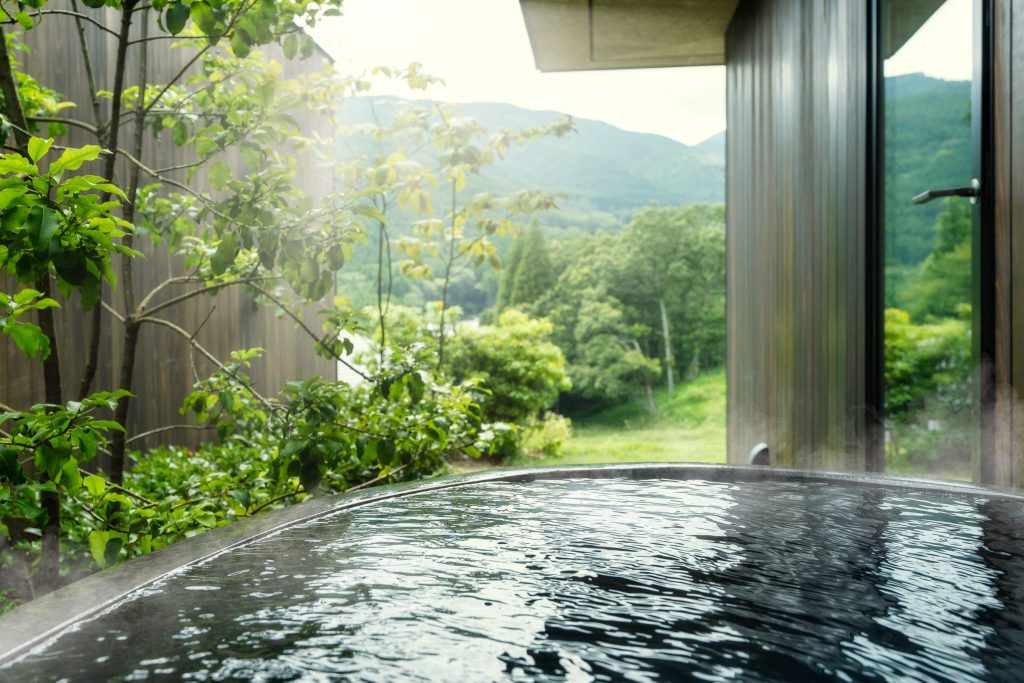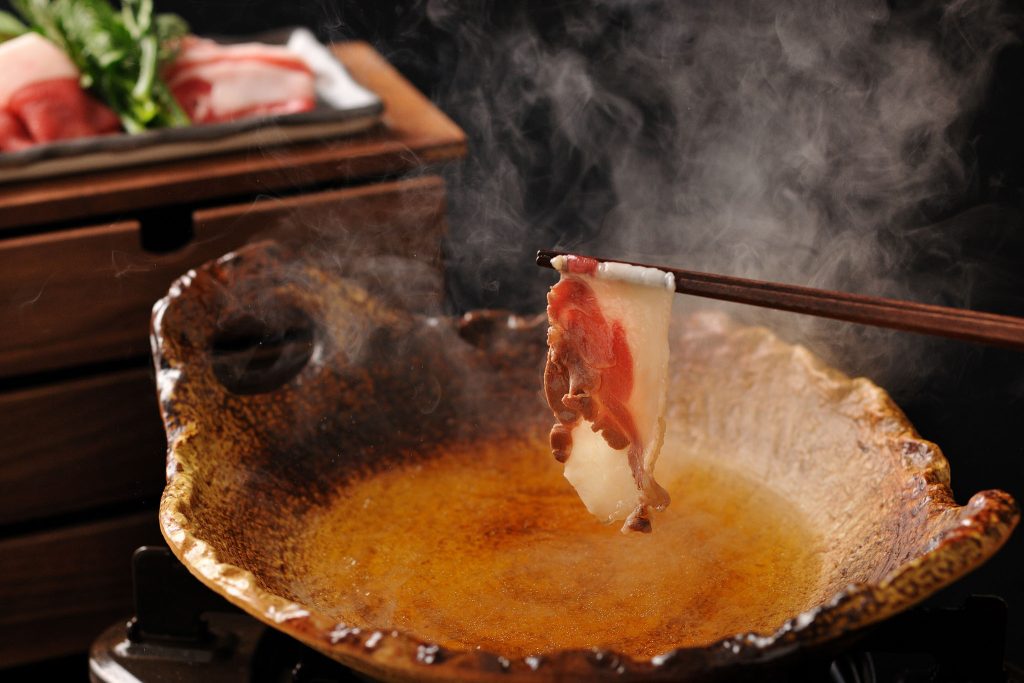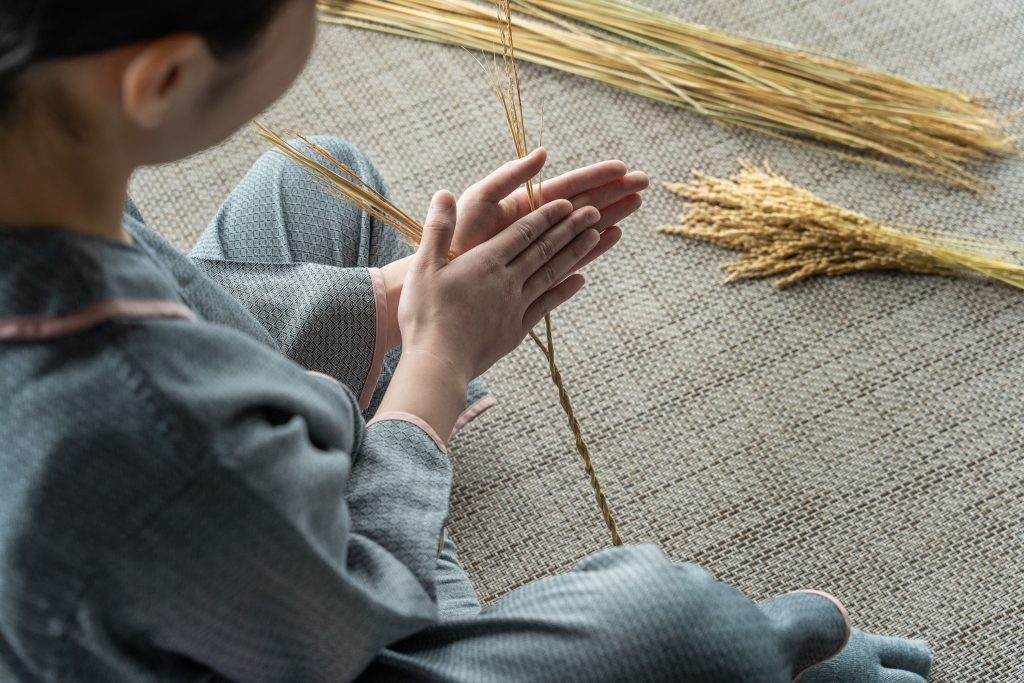Steam beads on my upper lip as I take in the serene view of Kyushu’s Mt Yufu from the onsen (hot springs) at KAI Yufuin. Settling deeper into the water, I let my thoughts unspool in the solemn presence of the mountain, often called ‘Bungo Fuji’, due to its resemblance to Japan’s Mt Fuji.
Hot springs healing is a form of spa therapy which has been practised in Japan since ancient times. People visited hot springs in the hope of curing maladies; today it’s more about curing malaise. The simple fact of the matter is that a hot-springs soak simply feels good – it’s the ultimate in relaxation and restoration after a long journey.
At KAI Yufuin, the onsen is comprised of indoor and outdoor baths, plus a post-soak lounge. It allows guests to experience the joys and health benefits this ancient practice – as well as indulge in other soothing rituals that are markers of ‘old Japan’.

First glance This reimagined ryokan (traditional Japanese-style inn) is the 20th property operated by Japanese hospitality juggernaut Hoshino Resorts under its KAI hot springs brand.
It comprises a main building housing the reception, lobby, travel library, restaurant and terrace, which in turn connects to the real beating heart of the resort, the onsen.
There are 45 guest rooms, including two free-standing suites which are set among the terraced rice paddies which cascade down the hill. One of the suites has a private outdoor hot spring bath. If you have the budget, that’s the one you want to book.
Design The entrance to KAI Yufuin welcomes guests with a series of marutake (unsplit bamboo) exterior walls, leading into the main building, designed by renowned architect Kengo Kuma to resemble a Japanese farmhouse.
From there, guests enter the lobby, a space that symbolizes tataki, or dirt floor entrance, with a hardened mixture of gravel, soil, and lime. At the far end, there’s an intriguing courtyard with stepping stones and elegant bamboo plants. This flows onto the ‘travel library’ where you can pour a cup of tea, and out to the terrace, which joins the onsen.

The room I stayed in one of the signature rooms set in a motel-style building amid the sawtooth oak forest. Despite the proximity to others, it’s whisper-quiet.
The room features a cloud-soft futon (actually, two – I’m told Japanese couples prefer not to share a bed). There’s a low-slung lounge area, a balcony overlooking the rice fields, a moody dark bathroom and the all-important genkan (entry where shoes and bags are stowed).
Check-in was completed in the room, as I sipped an iced tea and nibbled at a yōkan (red bean paste sweet) my room attendant set in front of me.
Food and drink Don’t miss the multi-course kaiseki dinner here served in a semi-private dining room with delicately lit washi paper walls. It showcases local food culture, including wild boar and other gibier (game meats) such as venison. During the sashimi course, puffer fish also put in an appearance. The kaiseki meal can be accompanied by a series of wines, sake and shochu, or mocktails. A cook-your-own Japanese breakfast (or Western style breakfast, if you prefer) is served in the morning.
Personal favourite The room comes complete with loungewear in the form of a samue suit (a jacket and pants set) and yukata (summer kimono). We’re asked to wear the samue suit out and about in the resort and I feel a bit foolish when first donning it. However, with everyone dressed the same way, it starts to feel a bit like a private pyjama party, in the best possible way.
Gripe It’s a small point, but the lighting in the bathrooms is fairly subdued, which makes it difficult to apply make-up.
What’s with all the … shichitoi grass? You’ll hear the word ‘shichitoi’ bandied about a lot. It’s a type of rare grass which is grown in the in the Kunisaki Peninsula of Oita Prefecture here. Soft and sweet-smelling, it’s what the tatami flooring here is made of, as well as the firefly basket lantern-like lamps.
KAI Yufuin offers workshops in straw twining, a traditional handiwork undertaken by villagers during the agricultural off-season. You can twist, press and weave shichitoi grass into take-home amulets.

Neighbourhood From the station and the charming streets of the main town of Yufuin, the resort is a short shuttle bus drive up a winding mountain road. Yufuin itself is located about ten kilometres inland from its more well-known sister Beppu. Like Beppu, it’s built around hot springs so prolific that there’s a footbath on Platform 1 at Yufuin Station. From here, it’s an easy stroll around the town’s restaurants, cafes and shops. You can even hire a bike from Yufu Tourist Information and explore on two wheels.
For more information or to book KAI Yuifin, click here.


